30 Scariest Horror Games Ever Made
These titles aren't just some of the scariest in gaming; they're among the scariest experiences that the horror genre has to offer.
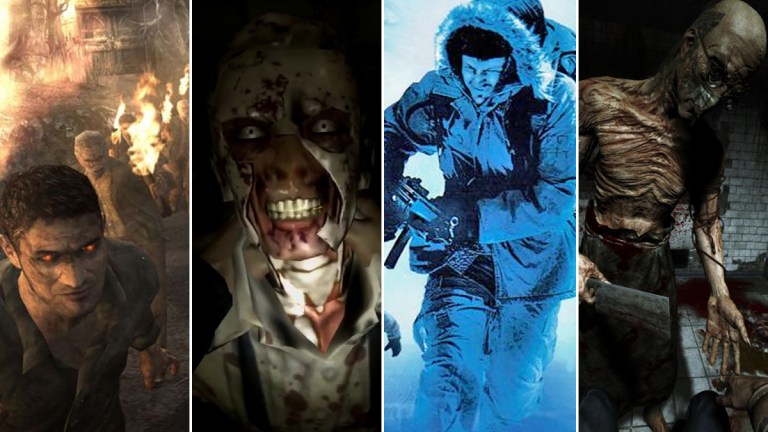
Video games have been trying to scare us since the early ’80s. While the seminal Haunted House Atari game, one of the earliest survival horror games, presented its scares through a mix of heavily-pixelated ghosts and spiders that weren’t so frightening at all, it was indicative of where the genre would one day go. With another push, thanks to titles such as Sweet Home and Alone in the Dark, the survival horror genre would give birth to some of its most frightening creations: Resident Evil, Silent Hill, Fatal Frame, Eternal Darkness, and Dead Space, to name a few.
Today, the genre lives on and continues to evolve. From interactive horror movies like Until Dawn to first-person experiences beyond comprehension like P.T., the survival horror genre continues to prove why it’s one of the mainstays of the industry and why it will always rise from the grave for one last scare.
Den of Geek has taken a look back at the long history of the horror genre and chosen 20 titles we think stand as the scariest games ever made:
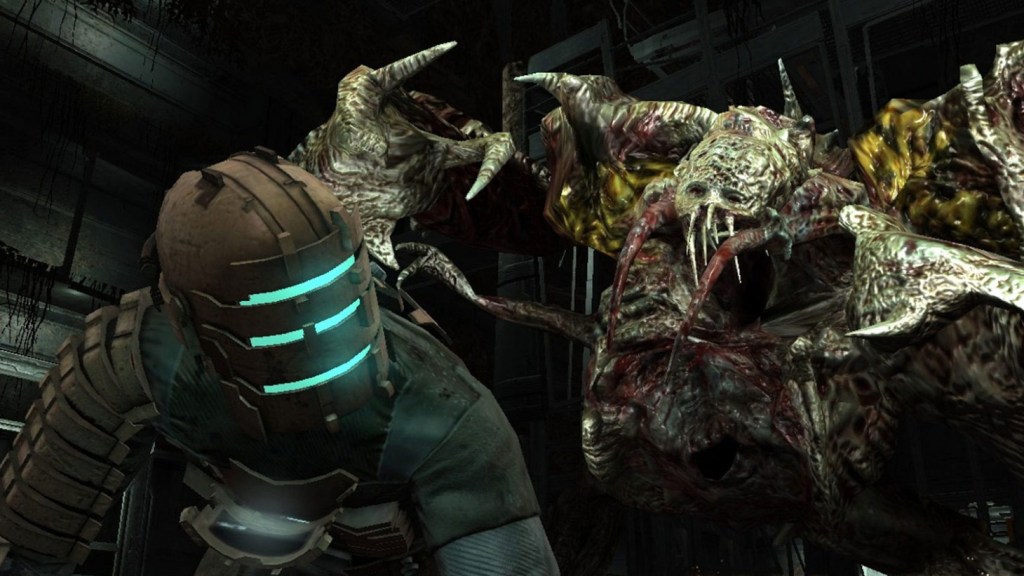
Dead Space
2008 | Visceral Games
Many of the best examples of sci-fi horror rely on the terror of the unknown. From Alien to Event Horizon, sci-fi horror stories often show us the consequences of going too far and facing something we don’t entirely understand.
That idea is at the heart of nearly everything that makes Dead Space brilliant. While the game’s atmosphere and world-class sound design deserve all the praise they’ve gotten over the years, Dead Space truly distinguishes itself in the ways its enemy design influences the combat and storytelling. You’ll never forget the first time you fell for a Necromorph “playing dead,” a shocking moment that assured that you’d never feel safe in this game, whether in a save room or walking down a quiet hallway.
What begins as gory jump scares quickly turns into a deeper feeling of dread for the player that, when combined with the incredible art and sound design inside the USG Ishimura, makes you feel like you’re constantly in danger. Any second, a Necromorph could pop out of a vent or sneak behind you or…
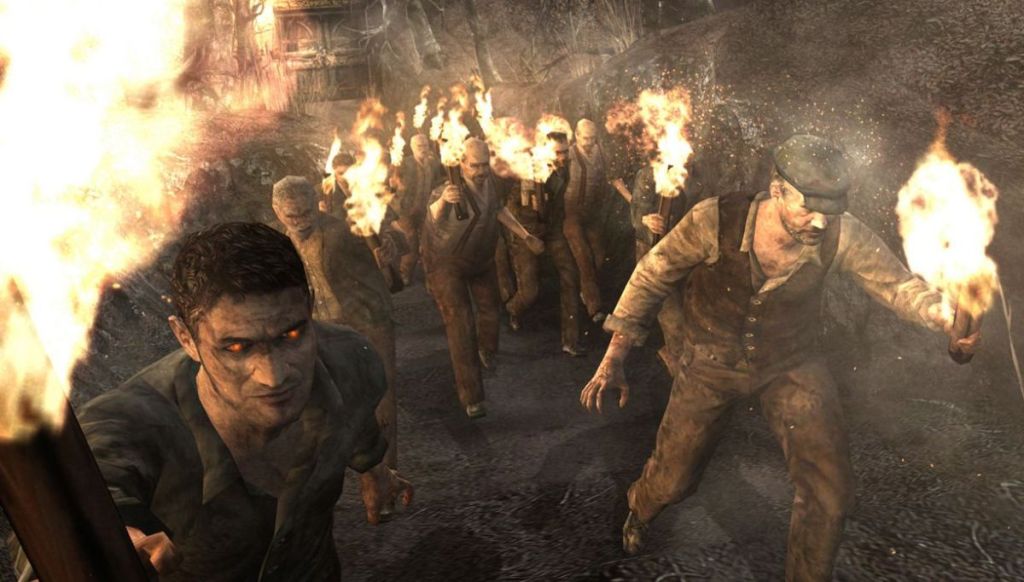
Resident Evil 4
2005 | Capcom
Many words have been written (including a few of our own) about how Resident Evil 4 brought more of an action movie feel to the horror genre and popularized a more cinematic style that stood in stark contrast to the more methodical survival horror titles the original Resident Evil helped popularize. The significance of the game’s contributions in that respect can’t be overstated.
Yet, it’s easy to forget that Resident Evil 4 remains a truly terrifying game. In lieu of making you feel utterly helpless, Resident Evil 4 delivers its frights in a series of sequences that test your newfound abilities with overwhelming horrors. You may be able to control your weapon more freely in Resident Evil 4 than you could before, but when you’re being chased down by a hulking figure wielding a chainsaw, precision aim is a cold comfort.
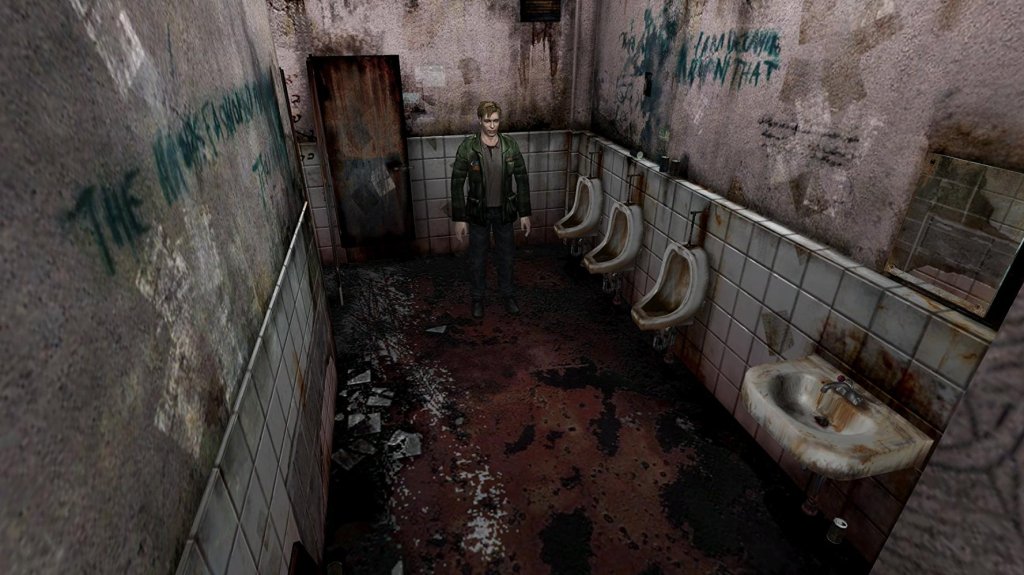
Silent Hill 2
2001 | Konami
Ask gamers what they remember about the first Silent Hill and they’ll likely say “the fog.” Granted, that game’s fog-filled streets can partially be attributed to the PlayStation’s atrocious draw distance, but there’s no denying the effectiveness of making a player feel like they’ll never know what’s around the next corner.
Silent Hill 2 relies a little less on fog but secures its status as arguably the most intimidating horror game ever made by invoking similar feelings of uncertainty. The game’s complex psychological narrative loosens your grip on reality while the visceral terror of creations such as Pyramid Head ensure that you’ll find no comfort in whatever answers you may uncover.
Few games have the ability to scar you quite like Silent Hill 2. It lingers in your mind long after the quick scares of other games have settled into a vague memory.
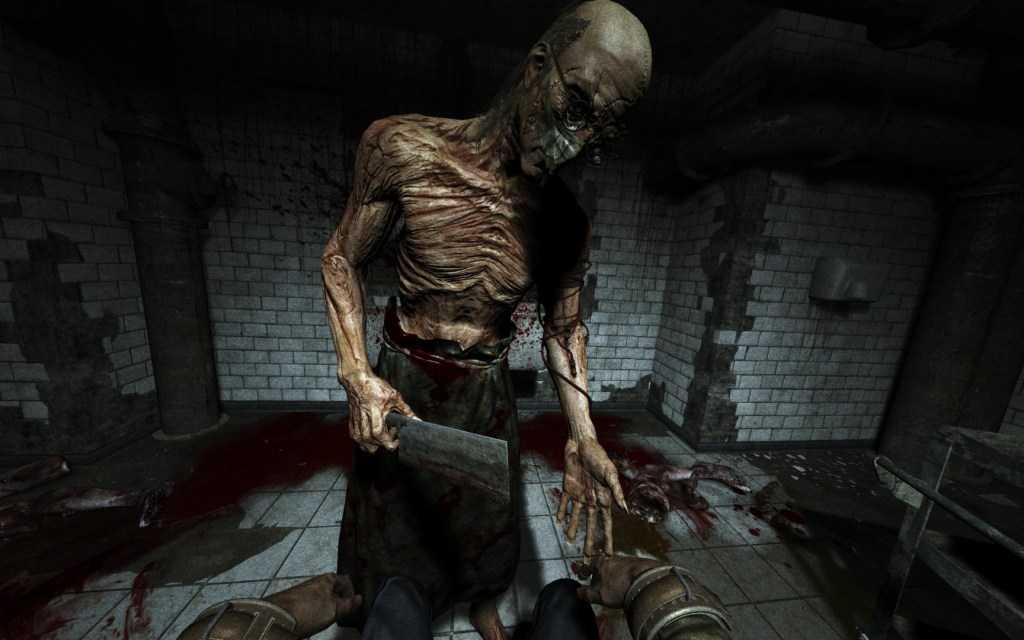
Outlast
2013 | Red Barrels
While Resident Evil and other early horror hits were appropriately labeled as survival horror, the “survival” element in those titles typically revolved around managing limited resources. Even modern survival games are still largely about item management.
The appropriately named Outlast takes a different approach to survival horror. Yes, it deprives you of resources (your battery-hungry camera is equal parts annoying and your only real weapon), but surviving Outlast is really about finding a way to mentally overcome the game’s relentless scares. Some may rightfully ask what’s so fun about a game that largely consists of hiding and running through the dark, but genre veterans will see Outlast as a test of their resolve and wit. The joy of Outlast doesn’t necessarily come from playing it or even beating it but from getting to say you survived it.
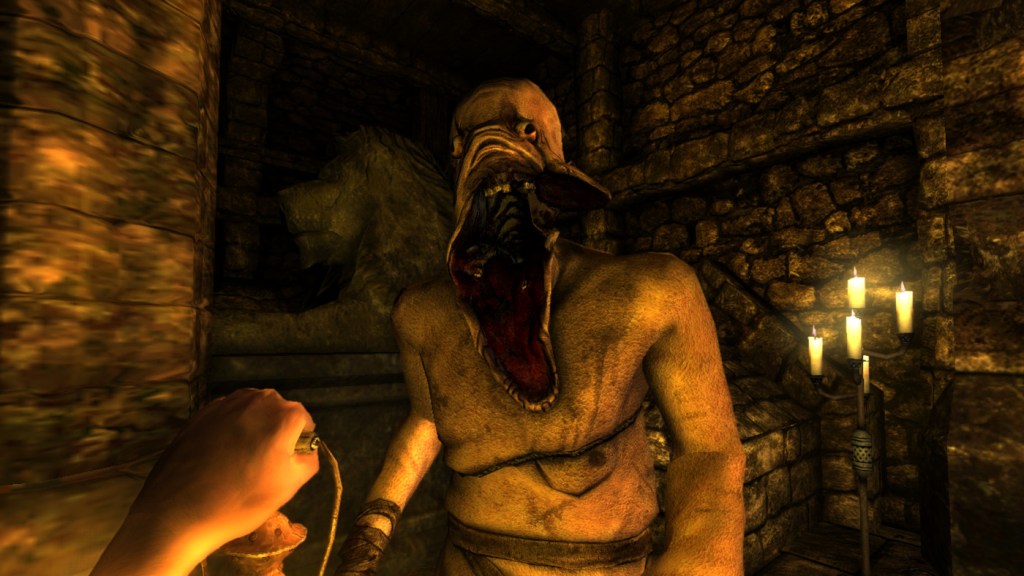
Amnesia: The Dark Descent
2010 | Frictional Games
Even the lowest-budget slasher film understands that much of the action in a horror story is based on “running.” In real life, running away from something is typically (if not sometimes unfairly) seen as an act of cowardice. In horror, running away is your first line of defense when faced with something too terrible to comprehend.
Amnesia understands the relationship between running and horror better than many games released before it and after it. By depriving players of any real way to defend themselves, Amnesia not only turns running into an act of courage in a game where sound triggers monsters and traversing darkness blindly drives you mad, but it showed that horror games no longer had to incorporate half-baked combat systems to engage and scare players.
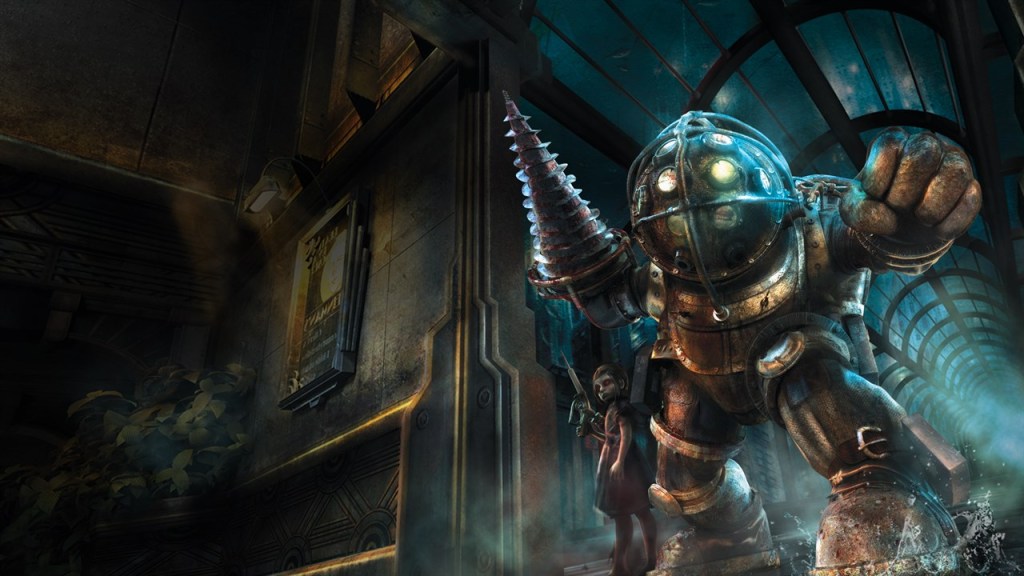
BioShock
2007 | 2K Boston
Horror films fans often debate about what “is” and “isn’t” horror. For instance, some may label Silence of the Lambs “horror” while others call it a thriller. But there are also many others who simply find cause to enjoy everything that scares them regardless of the label.
Maybe BioShock doesn’t typically receive the horror designation, but it’s absolutely one of the most unnerving and effective examples of horror that you’ll find in gaming. From its opening sequence, which quickly reveals the bloody aftermath of a madman’s delusions, to its enthralling questions about the nature of control, BioShock is genuinely terrifying when it needs to be.
BioShock may not run on nightmare fuel, but it uses the genre’s best tricks to propel its brilliant narrative and incredible world-building.
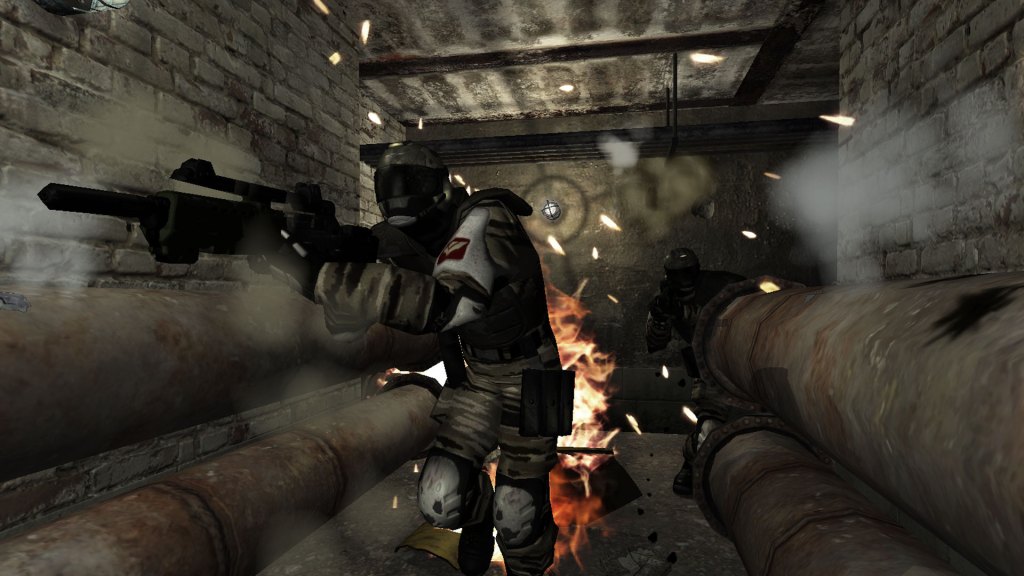
F.E.A.R.
2005 | Monolith Productions
F.E.A.R. released around the height of the “scary little girl” movement that really kicked into overdrive when The Ring became a surprise hit in the US. Without a doubt, the ghastly little Alma remains one of the best uses of the “creepy child” trope in gaming.
What’s easy to forget, though, is that F.E.A.R. was also an innovative action game that set a new standard for the quality of enemy A.I. in a first-person shooter. It’s that combination of Western action and Eastern horror that not only makes F.E.A.R. unique but the kind of horror gaming experience that finds a way to keep you on your toes while still letting you blast your way through rooms of enemies.
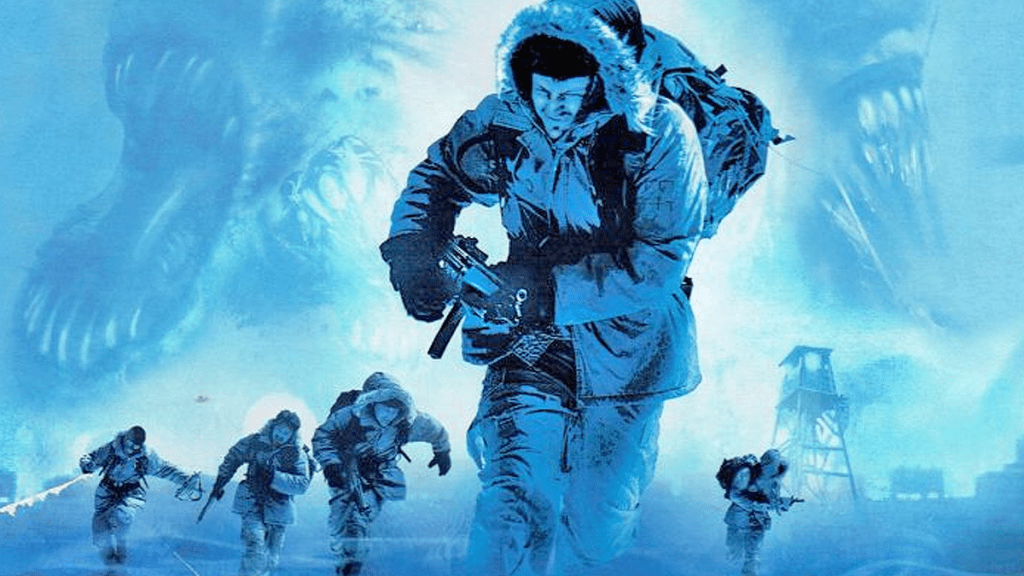
The Thing
2002 | Computer Artworks
Back in the early 2000s, it was easy to dismiss a licensed game meant to tie into a movie or TV show, which is why you may not know that The Thing was ever adapted into a video game. But despite all of that, The Thing offers a truly innovative take on horror gaming.
Much like the film it’s based on, The Thing‘s gameplay revolves around mistrust and isolation. You never really know which of your NPC companions is infected, but what’s truly fascinating are the ways that the game makes you work to gain the trust and loyalty of those same characters who are also unsure whether you are who you say you are. Never knowing who is friend and who is foe makes for a truly unnerving experience, to say the least, and few horror titles since have come close to replicating the terror of The Thing‘s trust system.
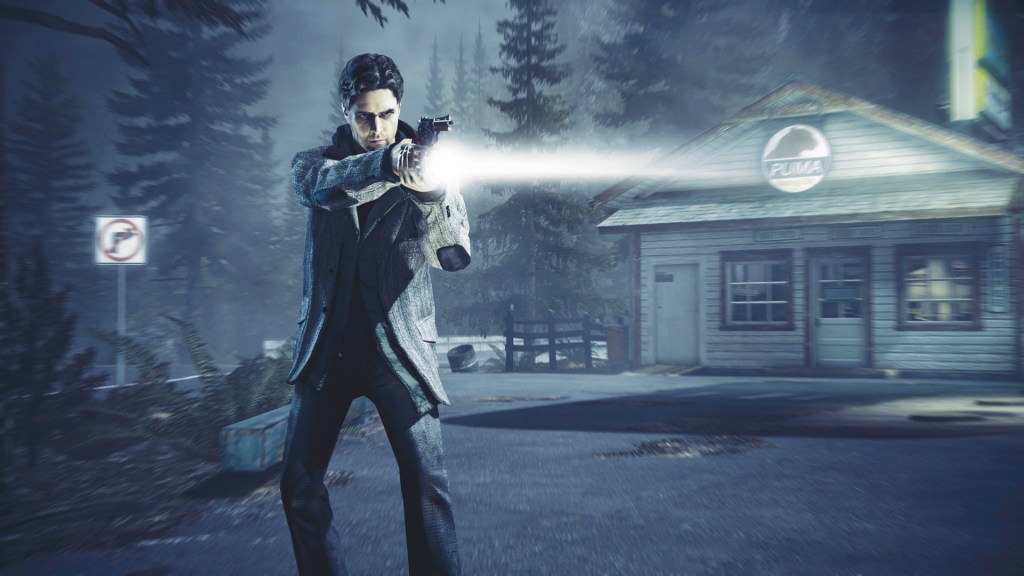
Alan Wake
2010 | Remedy Entertainment
Essentially gaming’s finest unofficial Stephen King story, Alan Wake features many of the legendary horror writer’s most notable tropes. There’s a writer, a small rural town surrounded by woods, and monsters who feed off of the protagonist’s own words.
But this isn’t just a copy-and-paste King video game homage. Developer Remedy Entertainment puts real heart into the title’s incredibly creepy story, which is complemented perfectly by the game’s emphasis on lighting and shadow as well as its dreamlike atmosphere. Alan Wake is absolutely a love letter to the small-town horrors most associated with King and Stephen Lynch, but the game’s occasional winks to those storytelling masters do little to dilute the effectiveness of its best scares.
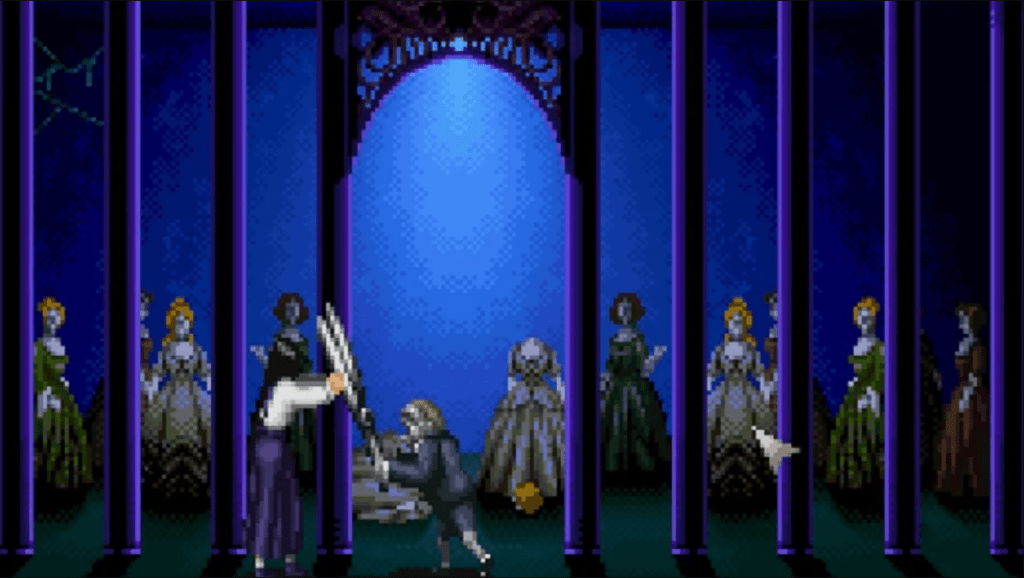
Clock Tower
1995 | Human Entertainment
Released about a year before Resident Evil, Clock Tower was barely out before it was consumed by the impact of one of the most revolutionary games of the ’90s. Yet, Clock Tower excelled at horror concepts that were not only missing from Resident Evil but are arguably underrepresented in modern horror games.
Thematically inspired by Dario Argento films, Clock Tower was a point-and-click adventure game that required you to work your way through an old house while constantly evading a relentless stalker armed with a comically large pair of garden shears. Not only was Clock Tower‘s “evade and escape” gameplay ahead of its time, but we’d argue that few games can boast a slasher villain as memorable as the wonderfully named Scissorman.
The Clock Tower series is seemingly doomed to never get the love it deserves, but the original remains one of the absolute scariest games of its era.
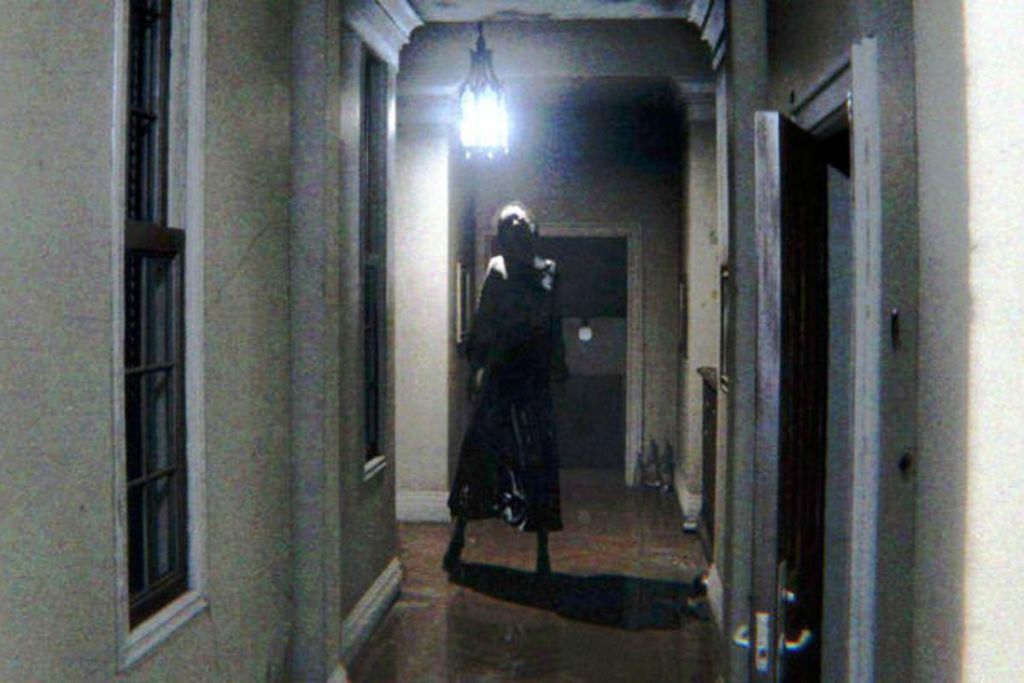
P.T.
2014 | Kojima Productions
It sometimes feels like the drama surrounding P.T. (its stealth release, the involvement of Hideo Kojima/Guillermo del Toro, the cancellation of Silent Hills) overshadows the game itself. That’s understandable, but when people talk about P.T., the conversation should begin and end with how it may be the scariest piece of entertainment in any medium.
The brilliance of P.T. lies in its ability to disorient the player no matter how many times they navigate its labyrinthine environment that somewhat invokes the maddening maze of Hellraiser 2‘s vision of Hell. Much like when you have a nightmare that takes place in your own home, P.T. constantly finds ways to alter seemingly familiar surroundings until you feel so betrayed that you don’t want to look around the next corner. It’s that invocation of insanity that truly defines P.T. scares, even if the visuals of the game’s ghosts and disturbing occurrences are enough to leave you petrified. Many have tried, but few other developers have come close to replicating the pure fear that P.T. instills in those who were brave enough to play it.
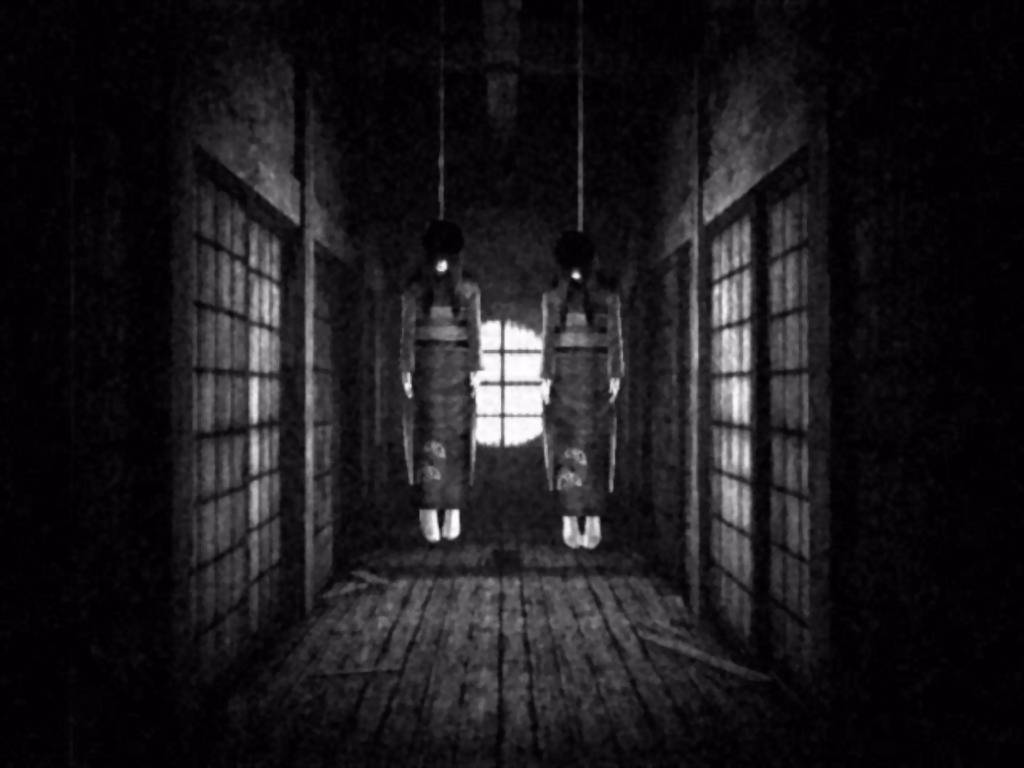
Fatal Frame II: Crimson Butterfly
2003 | Tecmo
Confrontation only instills fear if you are not confident in the outcome. This is why many horror game creators often strip players of all forms of self-defense. After all, having a weapon with which you can repel and kill the monsters inspires a sense of safety — or at least confirms that you have a fighting chance to survive to the end of the game.
Fatal Frame II takes a different and brilliant approach to confrontation and video game combat. The game arms you with a special camera that is able to ward off spirits. However, the camera is only really effective if you are willing to get uncomfortably close to the spirits and wait for your camera to indicate that you are going to get an optimal shot. This style of in-your-face combat, combined with the grotesque design of the spirits themselves, means that you never feel confident in your ability to defend yourself despite the fact that you’re armed with the best possible weapon for your situation.
The original Fatal Frame is also quite good, but the level and character design of Crimson Butterfly puts it over the top.
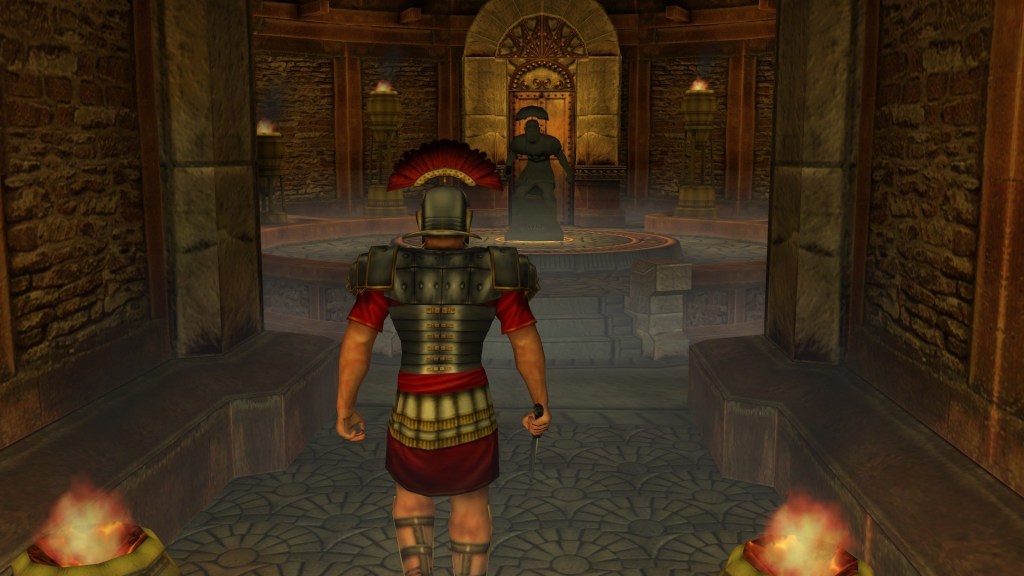
Eternal Darkness: Sanity’s Requiem
2002 | Silicon Knights
The best horror games are the ones that take full advantage of the unique abilities of the video game medium. That isn’t to say that a more cinematic video game experience can’t be scary, but rather that there’s something special about horror games that explore what’s possible when you’re the one responsible for what happens. So far as that goes, few do it better than Eternal Darkness.
We really like Eternal Darkness‘ level design, centuries-spanning story, and memorable cast of characters, but Eternal Darkness‘ sanity system is the reason it’s on this list. As your protagonist loses their sanity through various in-game mechanics, the world around them is altered in fascinating ways. Statue heads follow them around, you can hear noises everywhere, the room shakes, the walls bleed…madness has really been depicted this effectively in a game since.
However, the best moments come when the game makes players believe that all of their saves have been deleted or that their GameCube somehow shut itself off. Those moments of meta-horror genuinely make you question what’s real and what’s in your head.
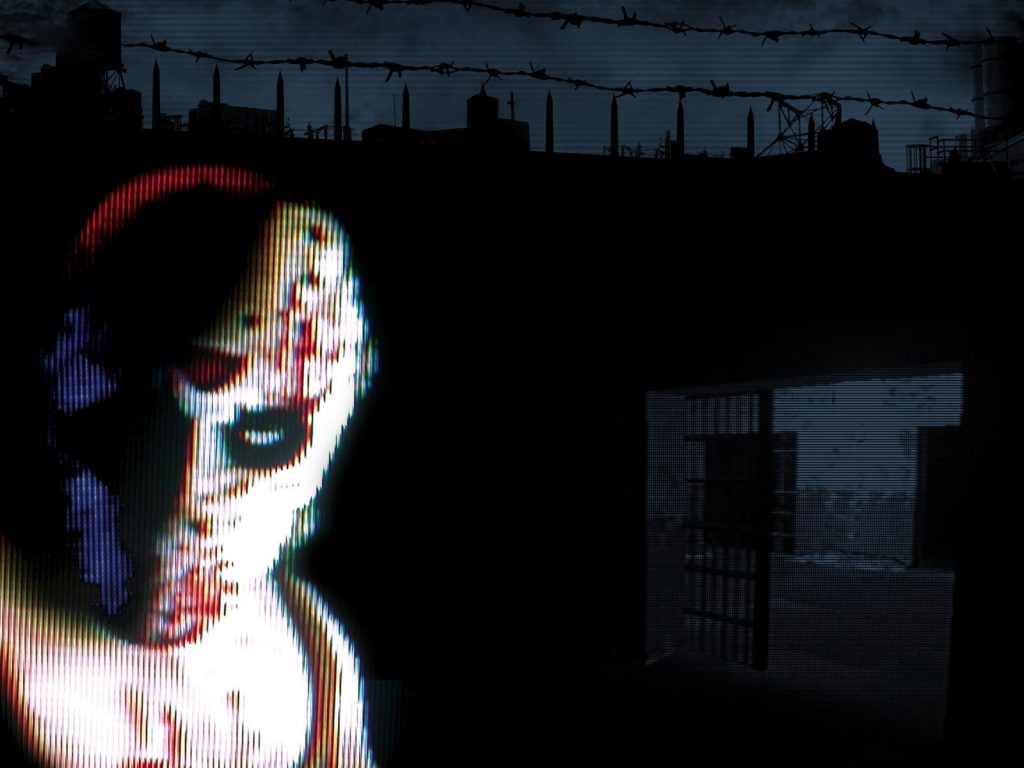
Manhunt
2003 | Rockstar
The horror of Manhunt isn’t limited to the ways the game scares you. This gem’s premise, environments, and tense stealth sequences are all exceptional but we’ve also seen them elsewhere before. What makes Manhunt truly horrifying is how it makes you feel when you play it.
In Manhunt, you are a contestant in someone else’s perverse snuff fantasy, one that forces you to reckon with your own humanity and just how far you’ll go to survive. While you can simply kill the foes in your way (or sometimes avoid them entirely), the game entices you to commit increasingly brutal murders in order to get the best rewards. The slimy praises from the director of this interactive snuff film, the uncomfortable visuals of the kill itself, and that disturbing feeling of accomplishment you get from pulling off a truly brutal kill stay with you long after the traditional scares of other games have faded away.
We once called Manhunt a true grindhouse game. Well, much like the grindhouse films of old, Manhunt will challenge your perception of what constitutes entertainment.
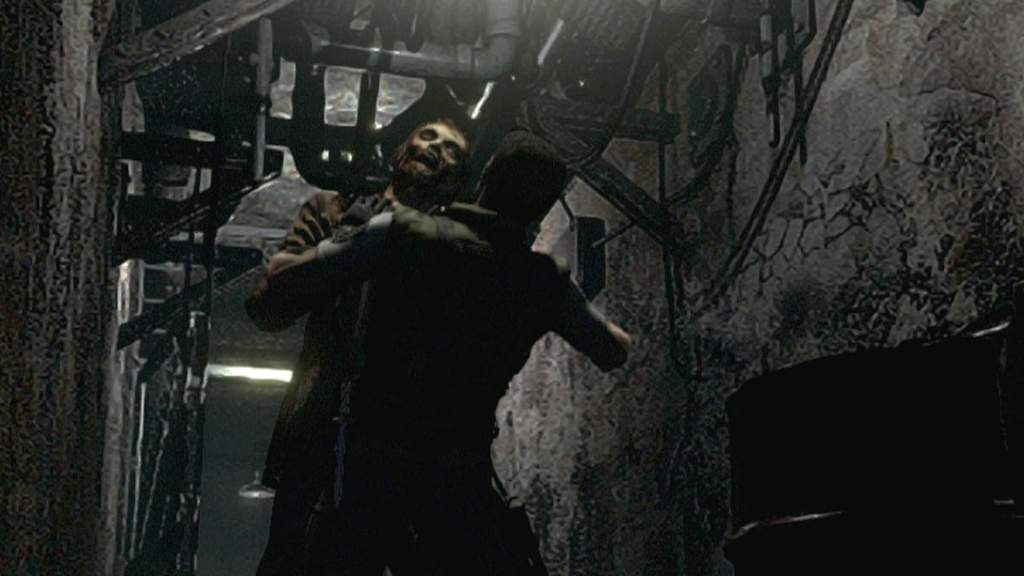
Resident Evil Remake
2002 | Capcom
The original Resident Evil is a brilliant game. It forever changed our expectations of the video game horror genre and set a standard that is still used to measure horror games to this day. However, the original Resident Evil pales in comparison to the greatness of its very own 2002 remake.
Resident Evil‘s remake is more than just a series of upgraded visuals (even if those are so good that the game somehow still looks incredible to this day). It’s about the Resident Evil team’s desire to make the game they wanted to make in 1996 but couldn’t due to the technical restraints. That vision includes incredible visual scares (many of which are made possible by the cinematography of the game’s fixed camera system), claustrophobic environments that feel like they’re choking the life out of you, and even the presence of Crimson Heads, a vicious mutation that may emerge if you don’t properly kill a regular zombie. It embodies everything that’s brilliant about the ’90s survival horror classic while improving it in ways that make it feel timeless no matter when you play it.
The fact that this remake somehow makes Resident Evil more accessible and more terrifying is an accomplishment that can’t be overstated. This truly is the gold standard of video game remakes.
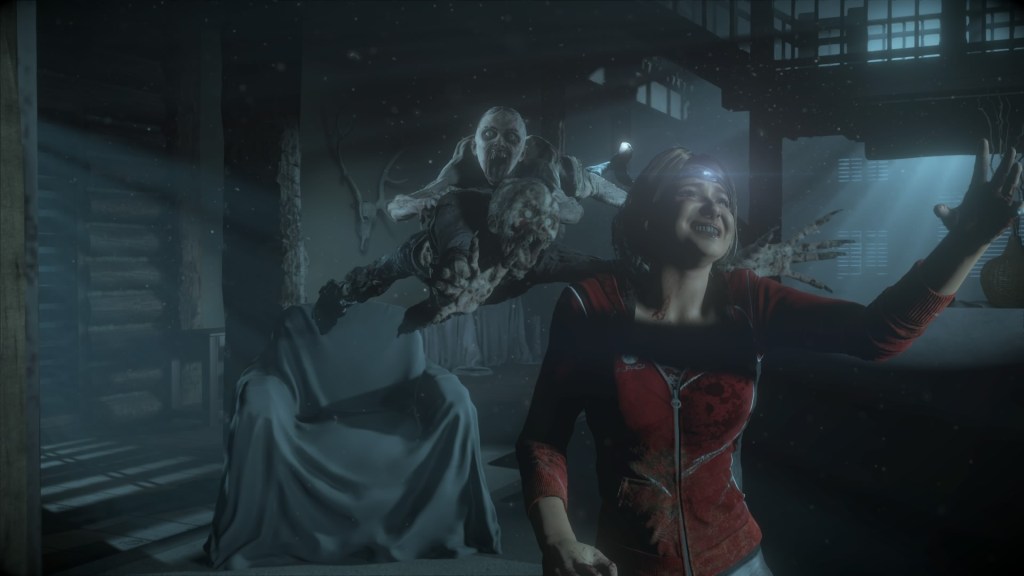
Until Dawn
2015 | Supermassive Games
The thrill of ’80s slasher films was rarely about the story, the message, or any other traditional cinematic virtues. It was more often about the dark pleasure of finding out who is going to get it next and how they are going to die. Until Dawn takes that thrill and mixes it with the interactivity you can only find in video games.
In this game, your choices can directly – or indirectly – affect whether a character lives or dies. You know how horror fans sometimes shout at the movie screen to warn characters to run or turn around or not to go in there? Well, now you get to see how far your advice will really get those characters.
Of course, the novelty of that mechanic sometimes results in people forgetting just how scary this game is. Granted, most of the horror revolves around jump scares, but the way that Until Dawn is able to consistently make us jump out of our seats through an escalating series of terrifying moments showcases not only the developers’ love for the slasher genre but its understanding that a jump scare is only as good as the feeling of dread right before it.
Until Dawn is the ’80s slasher film that gamers spent decades asking for, but it’s also more than that. It’s a game that manages to turn quick scares into lasting nightmares that are as fun to share with friends as the most memorable horror hits of the ’80s.
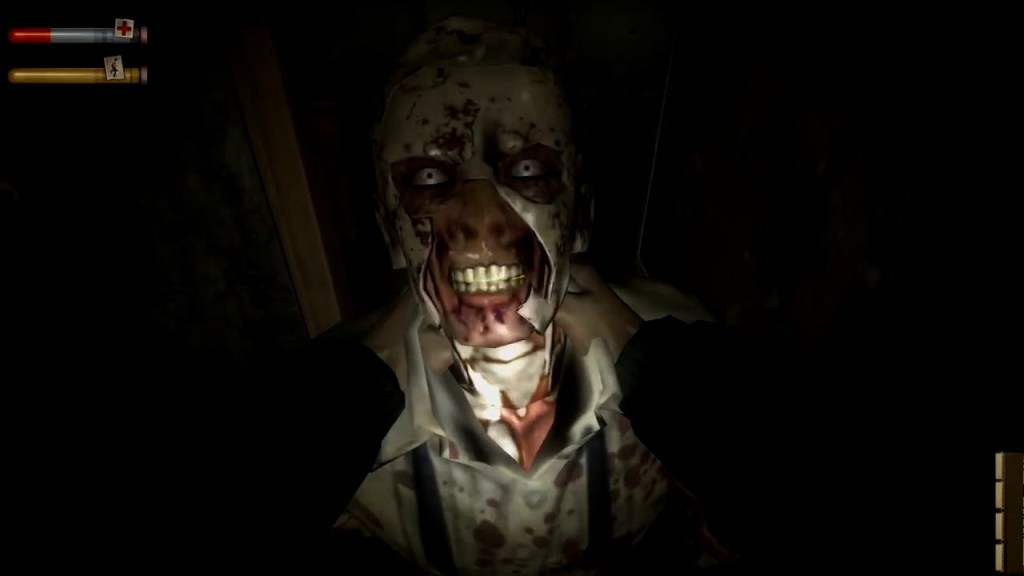
Condemned: Criminal Origins
2005 | Monolith Productions
Quietly released as part of the Xbox 360’s launch lineup, there’s a good chance that many gamers of that era overlooked Condemned in favor of titles like Perfect Dark: Zero, Project Gotham Racing 3, and Kameo: Elements of Power. That said, those who took a chance on this obscure horror title know it easily ranks among the scariest game ever made.
The story of a federal investigator who is tasked with tracking down a series of serial killers, Condemned covers thematic ground that we surprisingly don’t see that often in gaming. It’s closer to a movie like Seven than the supernatural fare we typically get in horror games. However, it proves to be the perfect setup.
The mindset and motives of these serial killers often manifest themselves through the lairs they inhabit. While none of the lairs are as terrifying as the department store where some mannequins are actually killers in disguise, the design of each area brilliantly forces you to dive into the mind of some truly disturbed individuals in order to stop them.
On top of that, Condemned set a gold standard for first-person horror (and first-person horror combat) at a time when that concept was as rough as it’s ever been. In fact, the great Resident Evil 7 owes more of its design pedigree to Condemned than P.T. or previous Resident Evil games. Yet, Condemned may still be scarier than even its spiritual successors.
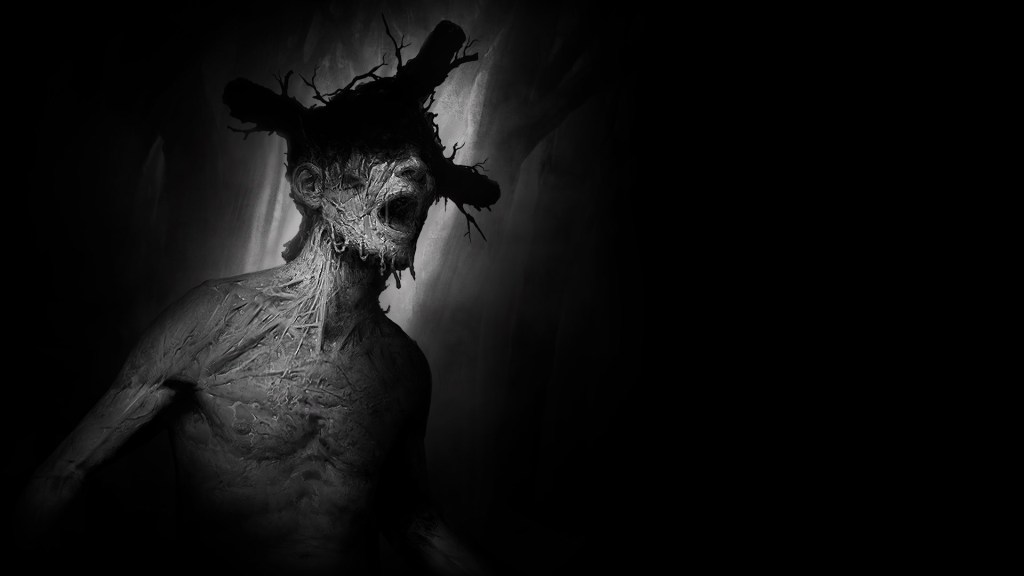
Darkwood
2017 | Acid Wizard Studio
2017 was an incredible year for gaming, so it’s really no surprise that Darkwood flew under the radar during its initial release. Then again, we don’t know many players who would willingly wade into this nightmare once they realize what it is.
You wake up in Darkwood unsure of who you are, where you are, or what is happening. All you know is that some malevolent force is attacking your cabin at night. To survive its increasingly violent attacks, you must scrounge for supplies, defensive tools, and anything that will help you keep the lights on for another night. While those nighttime scenes are the source of Darkwood‘s most memorable moments, it’s those other times when you’re wandering an endlessly dark forest scrounging for supplies that Darkwood instills a feeling of hopelessness in you that leaves you wondering how you’re ever going to make it.
Survival has long been a core element of horror gaming, but when it comes to making you truly dread the dark and feel as if you are surviving against impossible odds, Darkwood does it better than any game in recent memory.
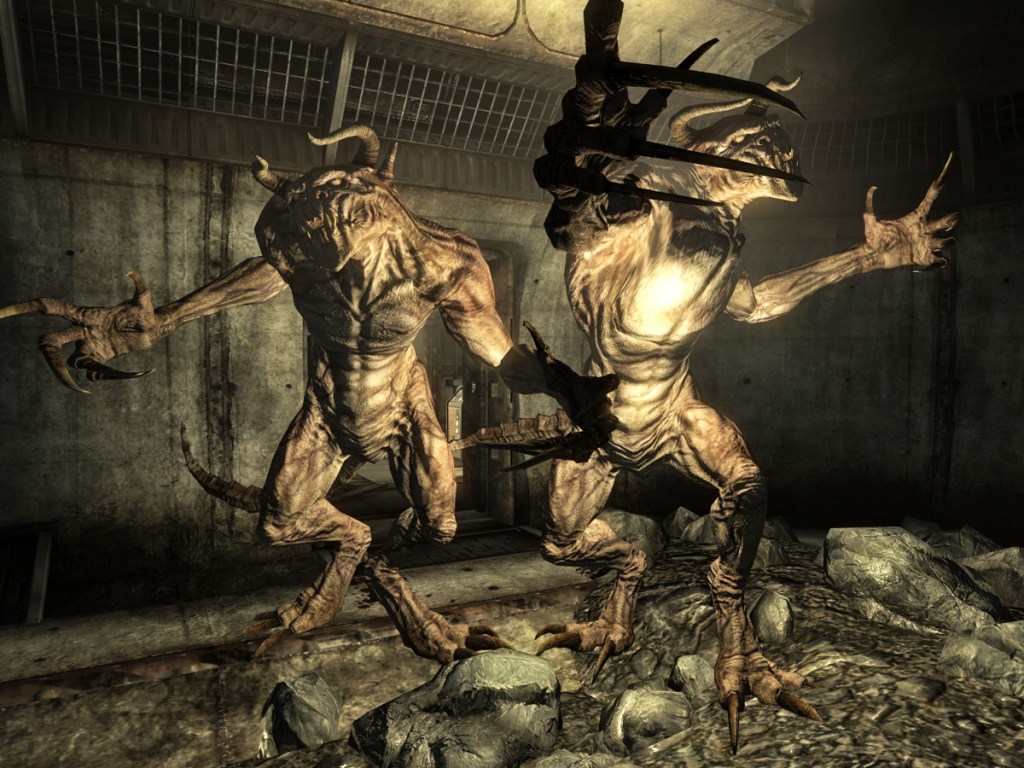
Fallout 3
2008 | Bethesda Game Studios
Surprised? Don’t be. We already named Fallout 3 one of the scariest games ever made and we’re sticking by that claim.
Yes, most visions of a post-apocalyptic future tend to be pretty horrifying. Skeletons holding hands on their death bed, grotesque mutants who stalk you in the dark, a lack of resources…there is plenty of traditional horror in Fallout 3. Yet, few of those traditional elements would be as effective if it wasn’t for the untraditional way that Bethesda delivers them.
Fallout 3 is a game that lets you get into trouble. You explore the Capital Wasteland at your own peril, and that freedom of exploration usually results in some nightmarish creation that you are usually not prepared to properly deal with. Remember your very first encounter with a Deathclaw? The way that Fallout 3 creates a general level of tension and fear is impressive, but what separates the game are those moments when you stumble into its darkest depths and encounter its true horrors.
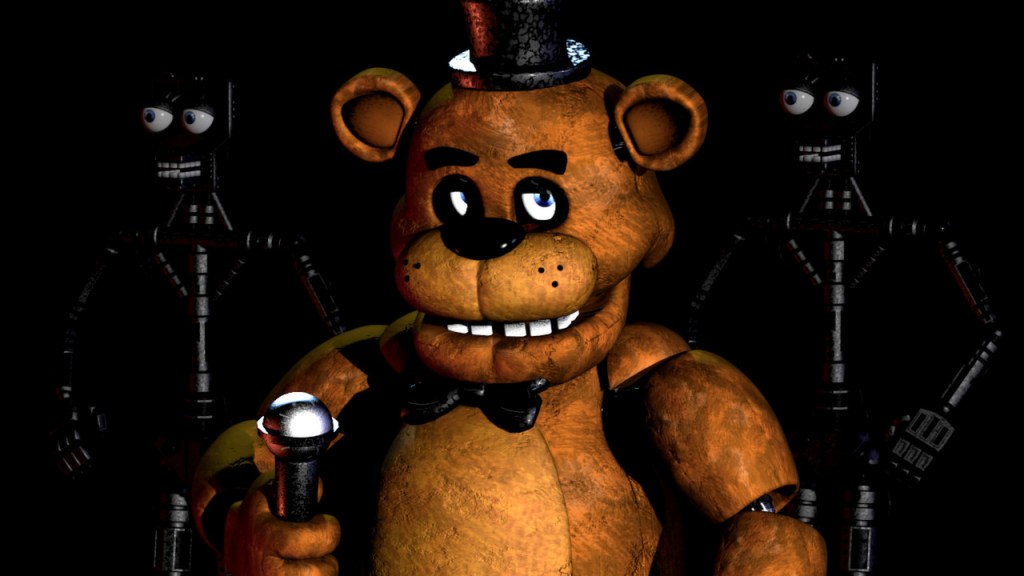
Five Nights At Freddy’s
2014 | Scott Cawthon
We tend to misremember cult classics. The Texas Chainsaw Massacre is remembered as this unflinchingly brutal and violent horror film, but there’s actually very little on-screen violence in the movie. First Blood is typically considered one of the prime examples of the high-octane ’80s action movie, but it’s actually more of a character study in which Rambo barely kills anybody.
Five Nights at Freddy’s is in a similar position. It’s seen as one of the godfathers of the YouTube jump scare era, which some people consider to be the cheapest form of horror imaginable, but actually playing the game reveals something much more interesting. While Five Nights at Freddy’s often warns you of impending scares via a gameplay language that you must learn to decipher, the game’s animatronic monstrosities feel unpredictable at first, as you scramble from camera to camera trying to figure out their next move.
Through its minimalist design, lack of gore, and fascinating premise, Five Nights at Freddy’s helped usher in an era of horror gaming that aimed to show that scaring the living hell out of the player was a selling point in and of itself.
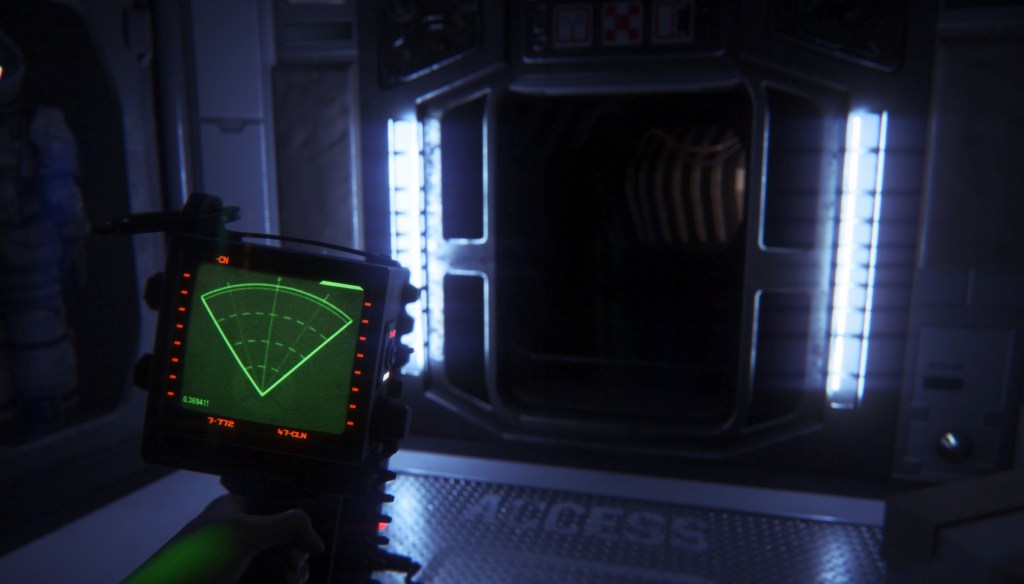
Alien Isolation
2014 | Creative Assembly
It’s kind of amazing that it took so long for someone to make a proper Alien horror game. We’ve been shooting at Xenomorphs for years, but few games based on the Alien films treated those creatures as the legends of horror that they truly are.
Alien Isolation uses a single Xenomorph more effectively than any piece of Alien media since the original movie. You know that feeling when you just saw a big spider in your room but it runs off and you have no idea where it went? Replace that spider with a Xenomorph that is just waiting to pounce on you the moment it reemerges, and you’ve got the basic Alien Isolation experience.
While Isolation’s late-game shift towards a slightly different kind of experience does hurt the game somewhat, this is still one of the most effective and brilliant uses of a license in gaming history.
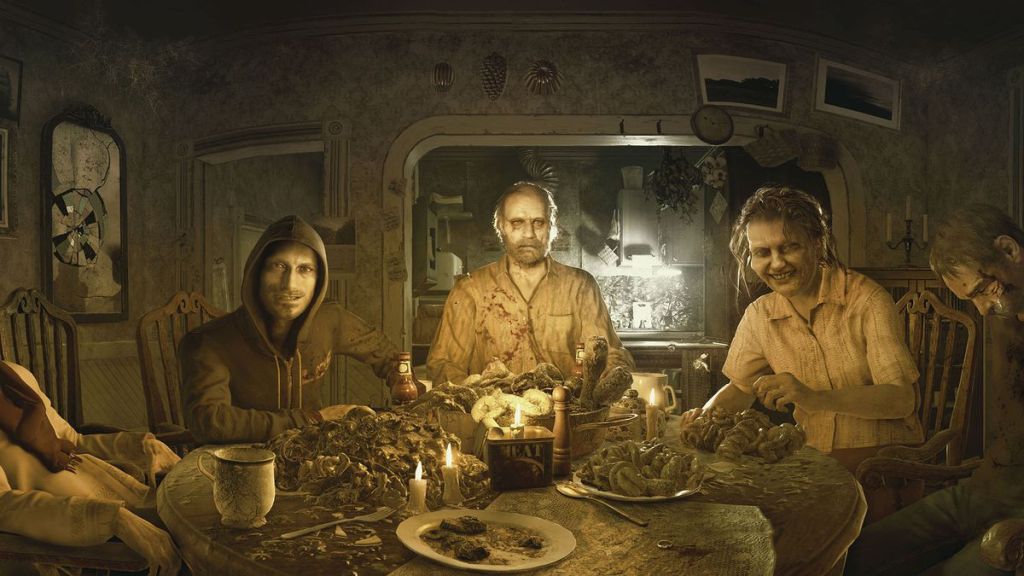
Resident Evil 7
2017 | Capcom
Resident Evil 7 is the scariest Resident Evil game ever made. While there are some notable contenders to that title (a couple of them are on this list), Resident Evil 7 brought pure horror back to the Resident Evil franchise in the biggest and best way possible.
In fact, Resident Evil 7’s opening moments rank right up there with some of the scariest games ever made. Great survival horror games should make you feel helpless, and that’s exactly what Resident Evil 7 does. From the game’s isolated Louisiana location to the number of times it forces you to simply run, Resident Evil 7 expertly blends roller coaster pacing with atmospheric scares.
Of course, only the bravest souls will be able to get through the incredible VR version of this game.
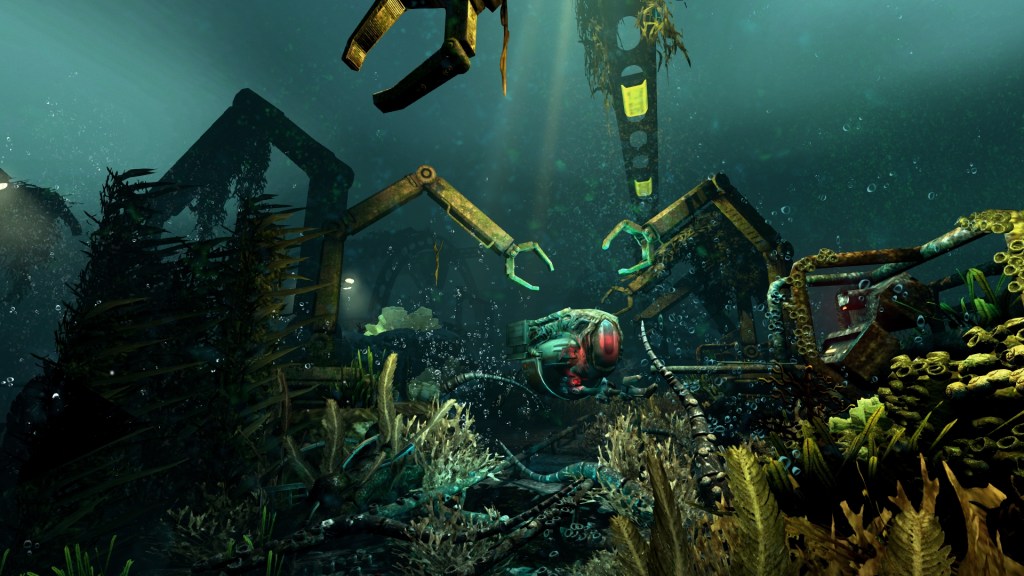
SOMA
2017 | Frictional Games
SOMA is certainly scary in all of the “traditional” ways. After all, this was made by the same team that delivered Amnesia. You can expect a ton of scary visuals and expertly executed jump scares.
However, SOMA really is that kind of horror game that gets under your skin in other ways. There’s a sense of hopelessness in this sci-fi horror game that only becomes more pronounced as you slowly unravel its many mysteries. You’ll start to welcome those more traditional scares for the way they break up the deeper feelings of dread this title inspires.
By the time you reach SOMA’s incredible ending, you’ll be left staring at the screen wondering if you’ll ever get back the piece of yourself that this game steals.

Prey
2017 | Arkane Studios
Prey flew under a lot of radars when it was released in 2017. Perhaps partially burdened by its association with the uneven Prey games of the past (an association its developers never really wanted in the first place), Prey failed to reach the one audience who would have most appreciated it: horror game fans.
Prey is a lot of things, but it’s the game’s horror elements that really turn the entire experience into something special. After all, Prey‘s central gimmick is the idea that just about any object in its world can secretly be an alien creature just waiting to jump out at you. Given that this is the kind of game that asks you to examine and collect a lot of objects…well, you do the math.
Jump scares aside, Prey is really all about its wonderful sci-fi horror atmosphere and the ways you’re forced to both appreciate the beauty of the game’s world and respect that it can kill you in so many ways.

S.T.A.L.K.E.R. Shadow of Chernobyl
2007 | GSC Game World
You would think that the scariest thing in S.T.A.L.K.E.R. would be the mutants that roam the wastelands of Chernobyl. At the very least, there are few games that offer anything more terrifying than suddenly turning a corner and staring at something you couldn’t find the words to describe even if you weren’t currently occupied with screaming.
Yet, it’s this game’s survival elements that make it so special. You are not prepared to endure the cruel world this game throws you in. Yes, ammunition is scarce, but so is water, food, and hope. Simply existing is a threat in this game, which is why you’ll often find yourself wondering why you’re even bothering to continue to exist.
There are all kinds of horrors in gaming, and S.T.A.L.K.E.R. Shadow of Chernobyl expertly utilizes just about all of them.
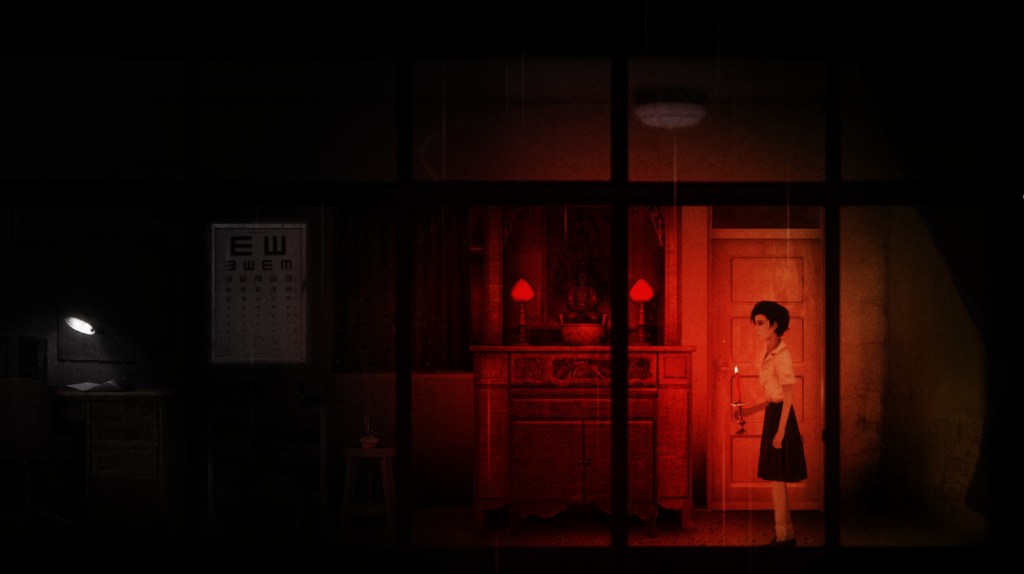
Detention
2017 | RedCandleGames
Tragedies can be strange things. Most of us can relate to certain tragedies like the death of a loved one or the loss of something sacred. Yet, there are other tragedies that we may understand or empathize with but could never truly feel in the way that the person most affected by them must feel them.
The magic of Detention can be found in the ways it forces you to feel every part of so many tragedies. This game sets itself up as a ghost story set in an abandoned school, and it is certainly an effective piece of horror as nothing more than that. Yet, the more you learn about this game’s characters, world, and history, the more you realize that Detention is actually the story of a series of personal and historical tragedies that are almost too much to process.
The greatest burden of living in a world of nearly infinite knowledge is the realization that we may only be equipped to handle and know so many things. Detention will test the limits of your ability to process so many different kinds of nightmares.
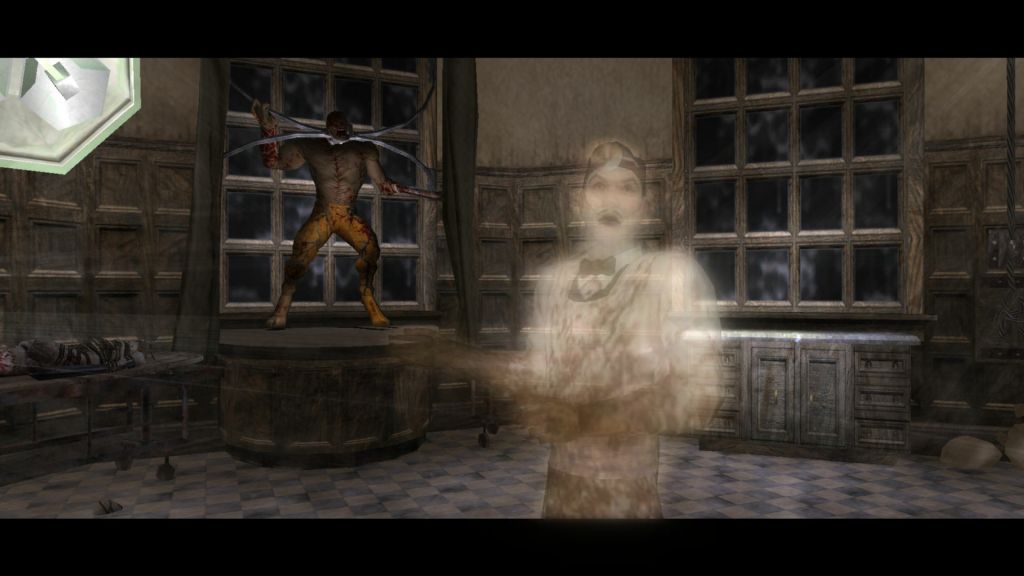
The Suffering
2004 | Surreal Software
I don’t know why there aren’t more works of horror set in prisons. Most prison systems are basically the biggest living nightmares possible, so you’d think we’d have more notable works of horror that push that natural nightmare to new extremes.
The Suffering is certainly one of the most notable works of prison horror in any medium, and I think it would retain that title even if there was a little more notable competition in that category. As the story of a mysterious convict forced to battle demonic forces within the confines of hell on Earth, The Suffering certainly makes the most out of its often underutilized setting.
Don’t be fooled into thinking that The Suffering is nothing more than ghouls behind bars, though. Indeed, only the bravest gamers will discover the darkest depths of where this game dares to go.
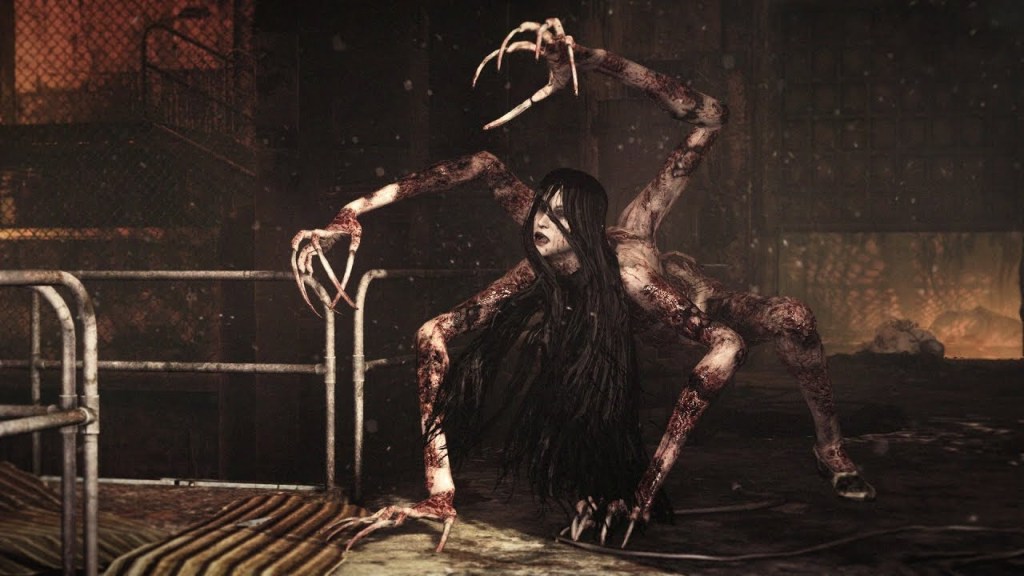
The Evil Within
2014 | Tango Gameworks
To be entirely honest with you, The Evil Within is kind of a disappointing game in many ways. Expectations were high for Shinji Mikami’s return to horror, and those expectations were somewhat deflated by this title’s iffy gameplay and pacing problems.
In terms of scares, though, The Evil Within does everything but disappoint. Mikami has suggested that this will be the last horror game he ever directs and, if that holds true, I can hardly think of a better way for such a legendary figure to go out than this museum of the macabre that comes at you in so many ways.
This is a relentless horror game that features a variety of funhouse-style scares that are as effective as they are darkly amusing. Good luck summoning the courage to return to this game after you inevitably need to step away from it.
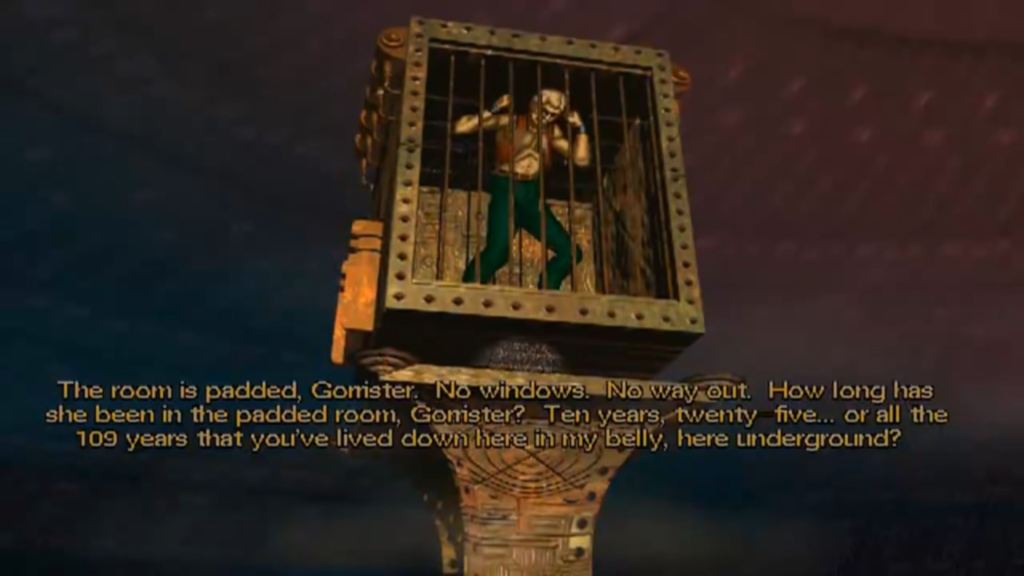
I Have No Mouth, and I Must Scream
1995 | Cyberdreams
Many of the scariest horror games tend to be a little more modern. Various advancements in technology and developers’ knowledge of the genre have led to increasingly scary games over the last 20 years or so. If you’re looking for the scariest game of the pre-Resident Evil era, though, it may very well be I Have No Mouth, and I Must Scream.
Blessed with one of the greatest names in horror history (a name it shares with the short story it’s based on), I Have No Mouth, and I Must Scream lives up to every word of its intimidating title. You may not think that a point-and-click adventure game can be scary, but that’s only because you haven’t played a point-and-click adventure game that forces you to explore the personal hells of five deeply disturbed people.
This is the kind of game that will leave you feeling like you need a shower. It’s truly amazing that this was unleashed upon the world way back in ‘95.
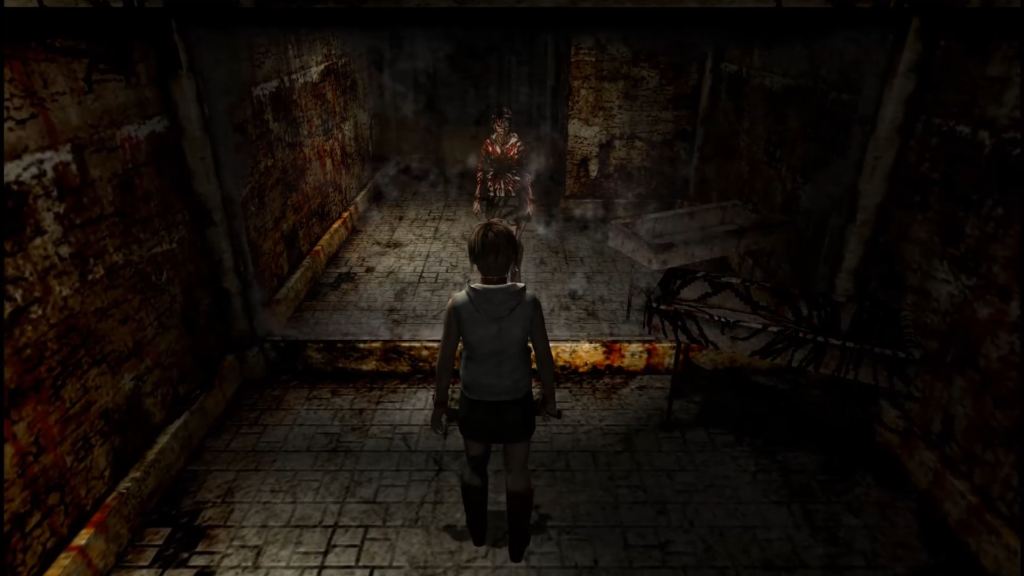
Silent Hill 3
2003 | Team Silent
Silent Hill 3 exists in a weird cultural vacuum. It’s clearly overshadowed by its legendary predecessors, and I’d argue that it sometimes gets lumped in with some of the…lesser Silent Hill efforts that would follow. However, there is a strong case to be made that Silent Hill 3 is the absolute scariest Silent Hill game ever made.
Like the first two Silent Hill games, Silent Hill 3 is really a deep dive into its character’s psyche that forces us to confront a lot of personal demons. The ace up this game’s sleeve, though, is its somewhat surprising number of well-placed jump scares that usually feature one of this game’s all-time great monster designs.
Whereas some other Silent Hill games are content with letting you stew in a vat of vague uncomfortableness for as long as they’re able, Silent Hill 3 is perfectly happy to interrupt your cesspool soak from time to time with something that will remind you that should never be so comfortable as to get lost in your own thoughts again.
